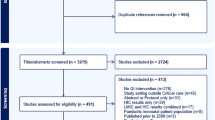Abstract
Background
Because of the increasing complexities of providing imaging for pediatric health care services, a more reliable process to manage the daily delivery of care is necessary. Objective We describe our Daily Readiness Huddle and the effects of the process on problem identification and improvement.
Materials and methods
Our Daily Readiness Huddle has four elements: metrics review, clinical volume review, daily readiness assessment, and problem accountability. It is attended by radiologists, directors, managers, front-line staff with concerns, representatives from support services (information technology [IT] and biomedical engineering [biomed]), and representatives who join the meeting in a virtual format from off-site locations. Data are visually displayed on erasable whiteboards. The daily readiness assessment uses queues to determine whether anyone has concerns or outlier data in regard to S-MESA (Safety, Methods, Equipment, Supplies or Associates). Through this assessment, problems are identified and categorized as quick hits (will be resolved in 24–48 h, not requiring project management) and complex issues. Complex issues are assigned an owner, quality coach and report-back date. Additionally, projects are defined as improvements that are often strategic, are anticipated to take more than 60 days, and do not necessarily arise out of identified issues during the Daily Readiness Huddle. We tracked and calculated the mean, median and range of days to resolution and completion for complex issues and for projects during the first full year of implementing this process.
Results
During the first 12 months, 91 complex issues were identified and resolved, 11 projects were in progress and 33 completed, with 23 other projects active or in planning. Time to resolution of complex issues (in days) was mean 37.5, median 34.0, and range 1–105. For projects, time to completion (in days) was mean 86.0, median 84.0, and range 5–280.
Conclusion
The Daily Readiness Huddle process has given us a framework to rapidly identify issues, bring accountability to problem-solving, and foster improvement. It has also had a positive effect on team-building and coordination.








Similar content being viewed by others
References
Wachter R (2015) The digital doctor: hope, hype, and harm at the dawn of medicine’s computer age. McGraw Hill Professional, New York, pp 1–243
Donnelly LF (2014) Daily management systems in medicine. Radiographics 44:1209–1212
Donnelly LF (2016) The Daily Readiness Huddle? A key component to a system of care. J Health Syst Pol Res 3:22.1–22.7
Mann D (2010) Creating a lean culture — tools to sustain lean conversions, 2nd edn. CRC Press, Boca Raton, pp 3–103
Liker JK, Convis GL (2012) The Toyota way to lean leadership — achieving and sustaining excellence through leadership development. McGraw Hill, New York, pp 121–143
Koenigsaecker G (2009) Leading the lean enterprise transformation. CRC Press, Boca Raton, pp 9–77
Liker JK (2004) The Toyota way. 14 management principles form the world’s greatest manufacturer. McGraw Hill, New York, pp 1–159
Bussell J (2012) Anatomy of a lean leader as illustrated by 10 modern CEOs and Abraham Lincoln. UL LLC, Northbrook, pp 1–150
Toussaint J, Gerard RA (2010) On the mend. Revolutionizing healthcare to save lives and transform the industry. Lean Enterprise Institute, Cambridge, pp 1–138
Kaplan RS, Norton DP (1992) The balanced scorecard — measures that drive performance. Harv Bus Rev 70:71–79
Zelman WN, Pink GH, Matthias CB (2003) Use of a balanced scorecard in health care. J Health Care Finance 29:1–16
Donnelly LF, Gessner KE, Dickerson JM et al (2010) Department scorecard — a tool to help drive imaging delivery performance. Radiographics 30:2029–2038
Johnson CD, Krecke KN, Miranda R et al (2009) Developing a radiology quality and safety program: a primer. Radiographics 29:951–959
Author information
Authors and Affiliations
Corresponding author
Ethics declarations
Conflicts of interest
None
Rights and permissions
About this article
Cite this article
Donnelly, L.F., Cherian, S.S., Chua, K.B. et al. The Daily Readiness Huddle: a process to rapidly identify issues and foster improvement through problem-solving accountability. Pediatr Radiol 47, 22–30 (2017). https://doi.org/10.1007/s00247-016-3712-x
Received:
Revised:
Accepted:
Published:
Issue Date:
DOI: https://doi.org/10.1007/s00247-016-3712-x




